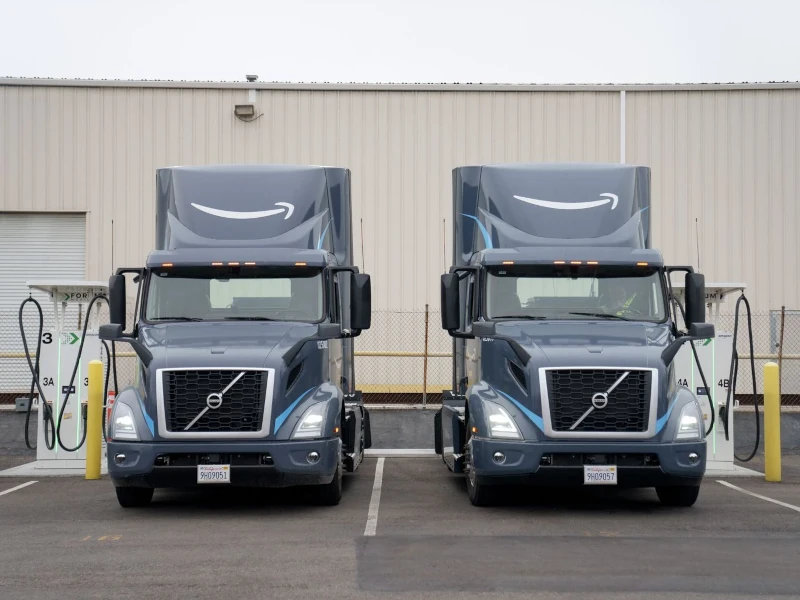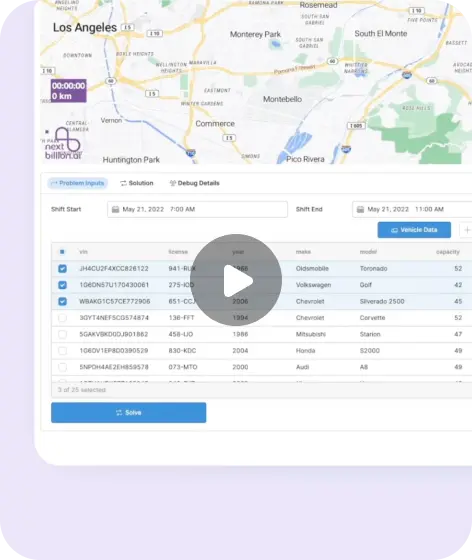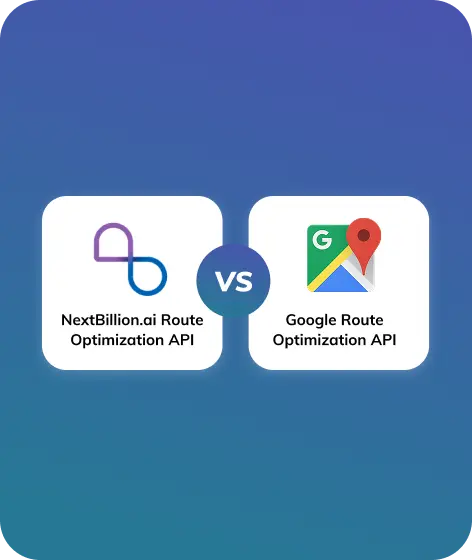
Table of Contents
The electric vehicle (EV) market is expanding rapidly, driven by rising fuel costs, stricter emission regulations, and growing consumer demand for sustainable transportation. As more EVs hit the road, the need for a reliable and efficient charging network becomes critical. Without proper infrastructure, drivers face issues like long wait times, uneven station distribution, and power grid strain.
This is where artificial intelligence (AI) steps in as a game-changer. AI-powered solutions help optimize charging station placement, balance power loads, and improve overall network efficiency. By analyzing real-time data, AI ensures that EV charging is faster, congestion is reduced, and energy distribution is more sustainable.
From predictive maintenance to dynamic pricing and smart grid integration, AI-driven strategies are shaping the future of EV charging networks—making them more reliable, cost-effective, and scalable.
In this article, we’ll explore how AI enhances EV charging infrastructure and the key benefits it brings to fleet operators, city planners, and energy providers.
Challenges in EV Charging Network Optimization

As the adoption of electric vehicles (EVs) accelerates, optimizing charging networks becomes increasingly complex. Without efficient planning, charging stations can become unreliable, leading to delays, power issues, and driver frustration. Below are some key challenges affecting EV charging network optimization:
1. Uneven Charging Station Distribution
Some areas have an excess of charging stations, while others have too few, creating accessibility issues. Urban centers may experience overcrowded stations, whereas rural or suburban areas may lack sufficient infrastructure. This imbalance results in inefficient network utilization and impacts the overall EV adoption rate.
2. Grid Load Management
EV charging places a significant strain on power grids, especially during peak hours. High demand can cause energy surges, leading to voltage instability and power outages. Without intelligent load balancing, charging networks struggle to distribute energy efficiently, affecting both EV owners and utility providers.
3. Long Wait Times & Inefficiencies
Poor station utilization often leads to long wait times, frustrating drivers. Stations may remain underutilized in some locations while others experience congestion. This inefficiency stems from a lack of real-time data integration, preventing proper distribution of vehicles across available charging points.
4. Predicting User Demand
EV charging needs fluctuate based on time, location, and weather conditions. For example, urban commuters may require more charging stations during work hours, while weekend travel patterns shift demand to highways. Weather factors, such as cold temperatures affecting battery efficiency, further complicate demand forecasting. Without accurate predictions, networks fail to meet user needs effectively.
Overcoming these challenges requires advanced data-driven solutions. AI-driven optimization offers a way forward by intelligently managing charging networks, reducing inefficiencies, and enhancing the overall EV charging experience.
How AI is Transforming EV Charging Networks
Artificial intelligence (AI) is revolutionizing EV charging networks by making them smarter, more efficient, and better equipped to handle growing demand. By analyzing vast amounts of real-time data, AI optimizes station placement, balances energy loads, improves reliability, and enhances the overall user experience. Here’s how AI is driving these advancements:
Smart Charging Station Placement
AI helps determine the best locations for new charging stations by analyzing traffic flow, user behavior, and energy grid availability. Instead of relying on static planning, AI-powered heat maps predict high-demand zones, ensuring that stations are placed where they are needed most. This prevents overcrowding in some areas and underutilization in others.
Dynamic Pricing & Load Balancing
AI enables dynamic pricing, where charging costs fluctuate based on demand. This helps distribute usage more evenly, reducing peak-hour congestion. Additionally, load balancing ensures that power is efficiently allocated across multiple stations, preventing grid overload and reducing the risk of power disruptions.
Predictive Maintenance & Station Reliability
Charging station downtime can be frustrating for EV users. AI-driven predictive maintenance helps identify potential issues before they cause failures. By analyzing patterns in power usage and equipment wear, AI can send alerts for battery degradation, faulty connectors, or power fluctuations, ensuring stations remain operational and reliable.
Real-Time User Routing & Demand Forecasting
AI improves the user experience by offering real-time routing to the nearest available charging station with minimal wait time. It integrates with navigation platforms like Google Maps to guide drivers efficiently. Additionally, AI forecasts demand based on traffic trends, weather conditions, and historical charging patterns, allowing networks to adapt in advance.
AI-Powered Energy Management & Renewable Integration
AI plays a crucial role in integrating renewable energy into EV charging networks. By predicting fluctuations in solar and wind power generation, AI optimizes energy distribution, ensuring that clean energy is used effectively. Smart grids powered by AI dynamically balance energy flow, enhancing sustainability and reducing reliance on fossil fuels.
Through these AI-driven strategies, EV charging networks become more efficient, reliable, and scalable, supporting the growing shift toward electric mobility.

Benefits of AI-Driven EV Charging Optimization
- Increased Network Efficiency: AI reduces congestion and ensures a smooth charging experience.
- Enhanced Grid Stability: Intelligent energy management prevents blackouts and enhances sustainability.
- Lower Operational Costs: Predictive maintenance and optimized charging schedules reduce expenses.
Better User Experience: Reduced wait times and real-time station availability improve satisfaction.
Real-World Examples of AI in EV Charging Networks
AI is already making a significant impact on EV charging networks worldwide. Leading companies are leveraging AI-driven solutions to improve efficiency, reduce congestion, and enhance user experience. Here are some real-world examples:
Tesla’s AI-Optimized Supercharger Network
Tesla uses AI to optimize its Supercharger network, ensuring efficient charging distribution across locations. By analyzing vehicle data, traffic patterns, and charging demand, Tesla’s AI system directs drivers to stations with the shortest wait times. Additionally, AI dynamically adjusts power delivery across multiple chargers at a station, preventing overload and improving overall efficiency.
Shell Recharge’s AI-Based Grid Optimization
Shell Recharge utilizes AI for smart grid management, helping to prevent power shortages and enhance energy distribution. AI algorithms balance power loads across Shell’s charging stations, reducing grid stress during peak hours. The system also integrates renewable energy sources, optimizing when and where clean energy is used for charging.
NextBillion.ai’s Route Optimization API for EV Fleets
NextBillion.ai provides an AI-powered route optimization API that helps EV fleets plan their routes efficiently. By considering factors like battery levels, real-time traffic conditions, and charger availability, the API optimizes delivery routes to minimize downtime and maximize operational efficiency. This solution is particularly beneficial for last-mile delivery companies and ride-hailing services that rely on EV fleets.
These examples highlight how AI is transforming EV charging networks, making them more intelligent, efficient, and scalable. As AI technology advances, its role in shaping the future of electric mobility will only grow stronger.
Future of AI in EV Charging Networks
AI-powered EV charging networks are continuously evolving, and future advancements will make them even more intelligent, efficient, and interconnected. Emerging technologies such as 5G, IoT, and machine learning will further enhance AI-driven solutions, improving charging speed, grid stability, and overall user experience.
5G, IoT, and Machine Learning in EV Charging
- 5G connectivity will enable real-time data exchange between EVs, charging stations, and grid operators, reducing latency and improving charging session coordination.
- IoT (Internet of Things) sensors in chargers will provide real-time diagnostics, predictive maintenance, and remote troubleshooting, reducing station downtime.
- Advanced machine learning algorithms will enhance demand forecasting, allowing networks to anticipate peak charging periods and adjust grid supply accordingly.
AI’s Role in Vehicle-to-Grid (V2G) Technology and Autonomous EVs
- Vehicle-to-grid (V2G) integration will allow AI to manage bidirectional energy flow, where EVs can feed excess battery power back into the grid during peak demand, stabilizing energy distribution.
- AI-powered autonomous EVs will intelligently coordinate charging schedules, optimizing routes to self-navigate to available stations when needed, further reducing congestion and improving efficiency.
As AI continues to evolve, EV charging networks will become smarter, more reliable, and more sustainable, playing a crucial role in the future of clean transportation and energy management.
Conclusion
AI-driven strategies are revolutionizing EV charging networks by enhancing efficiency, reducing costs, and improving user experience. As the EV market grows, integrating AI into charging infrastructure will be crucial for sustainable and scalable solutions.
Looking to optimize your EV charging network and route planning? Explore NextBillion.ai’s AI-powered solution today!
About Author
Shivangi Singh
Shivangi is a seasoned Technical Writer with a passion for simplifying technical concepts. With over 5 years of experience, she specializes in crafting clear and concise documentation for various technical products and platforms.









